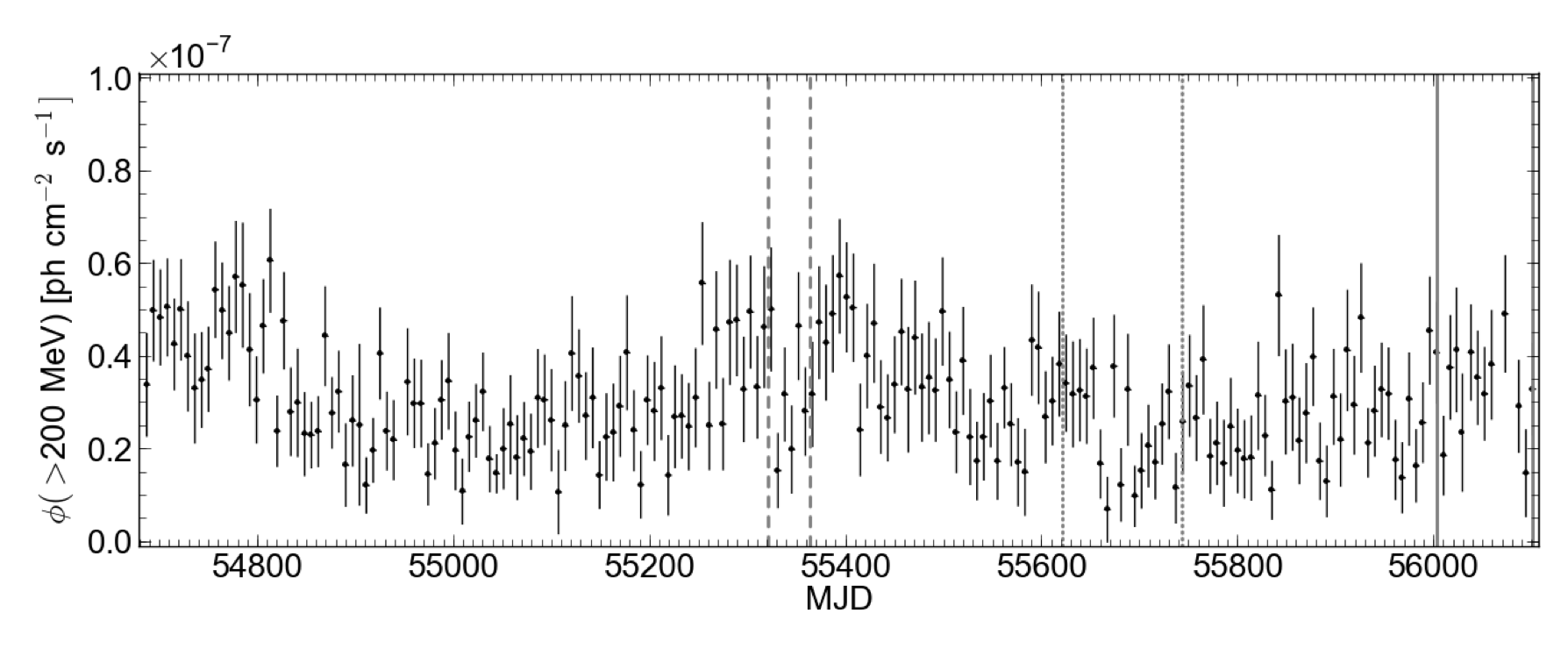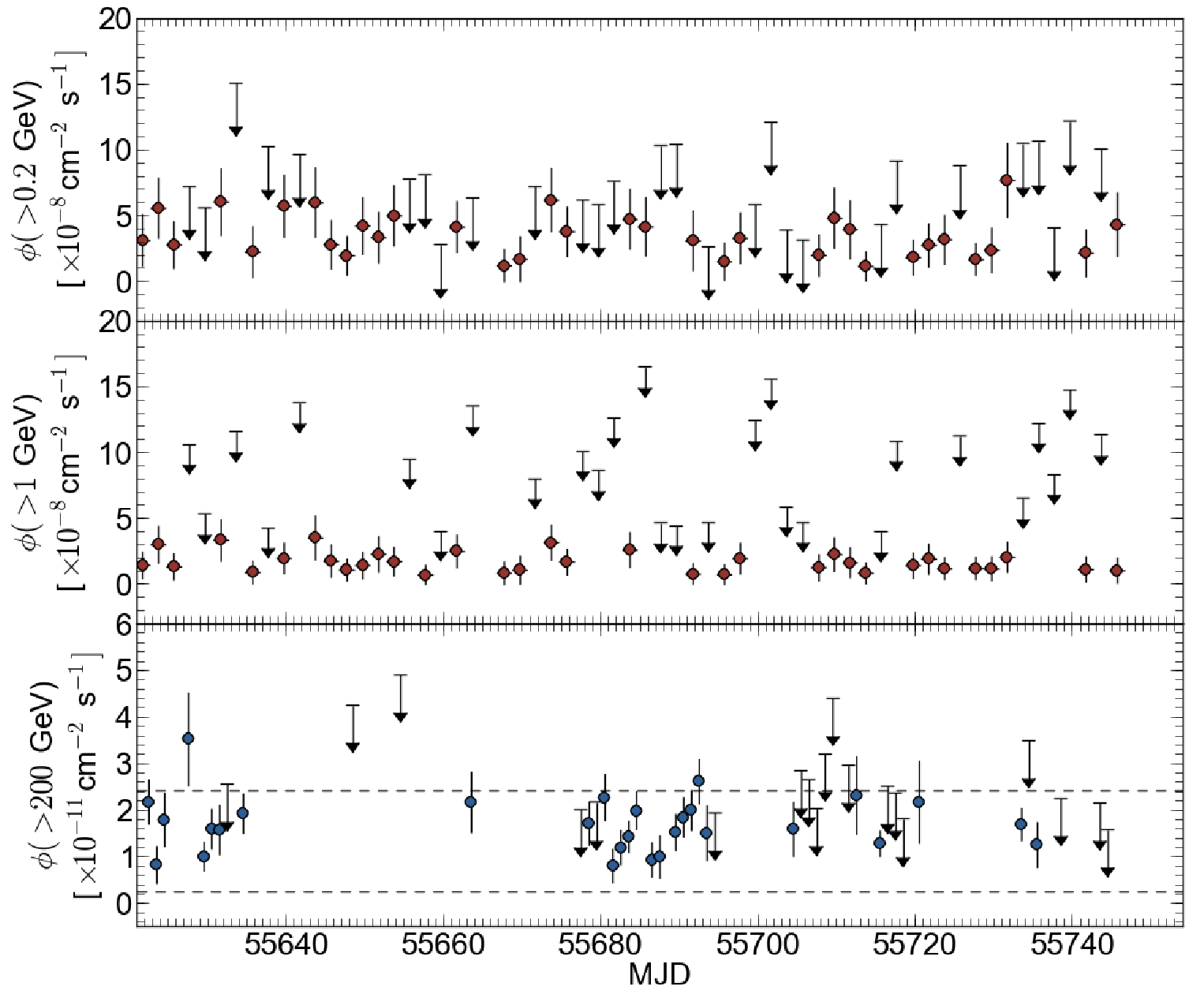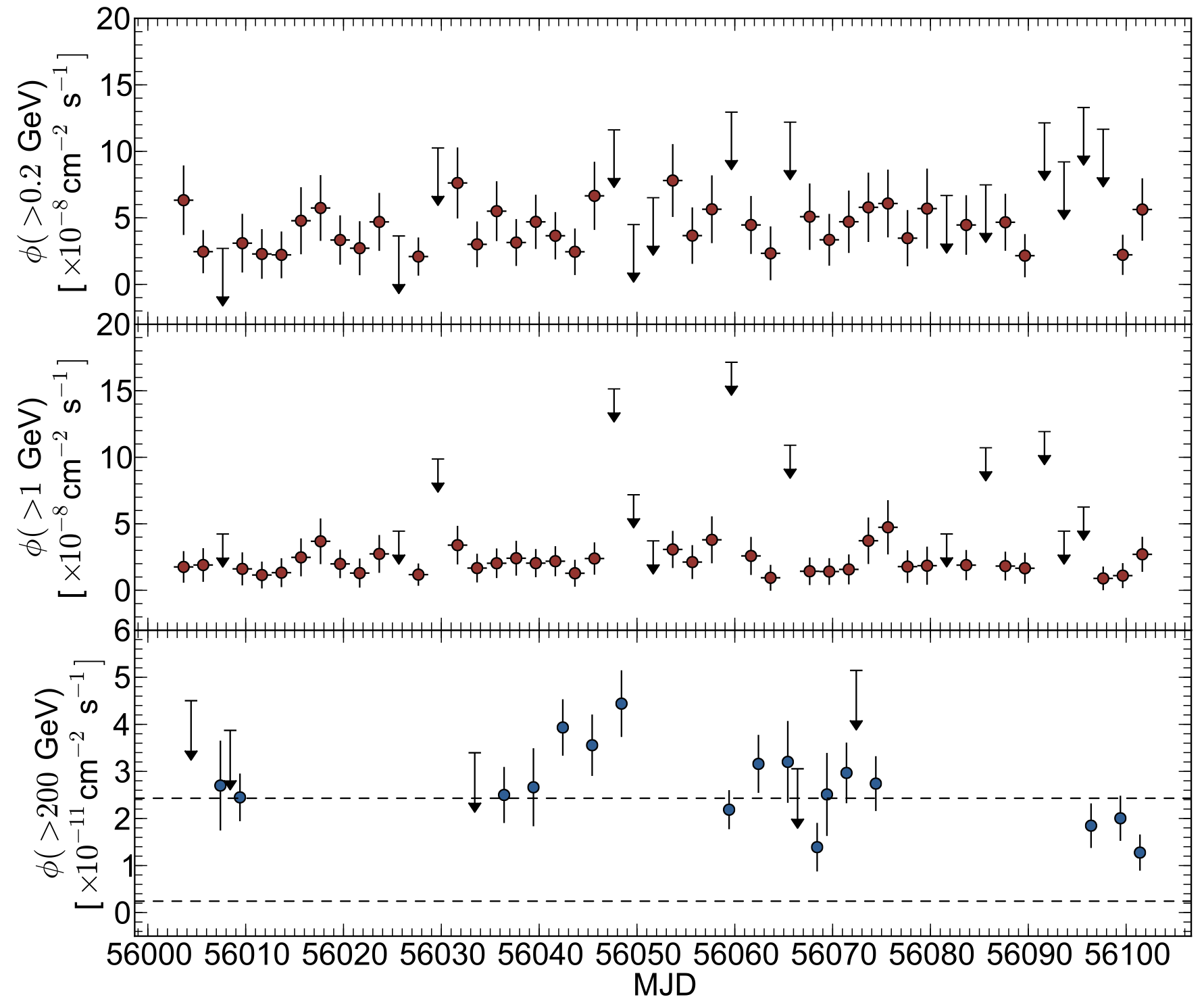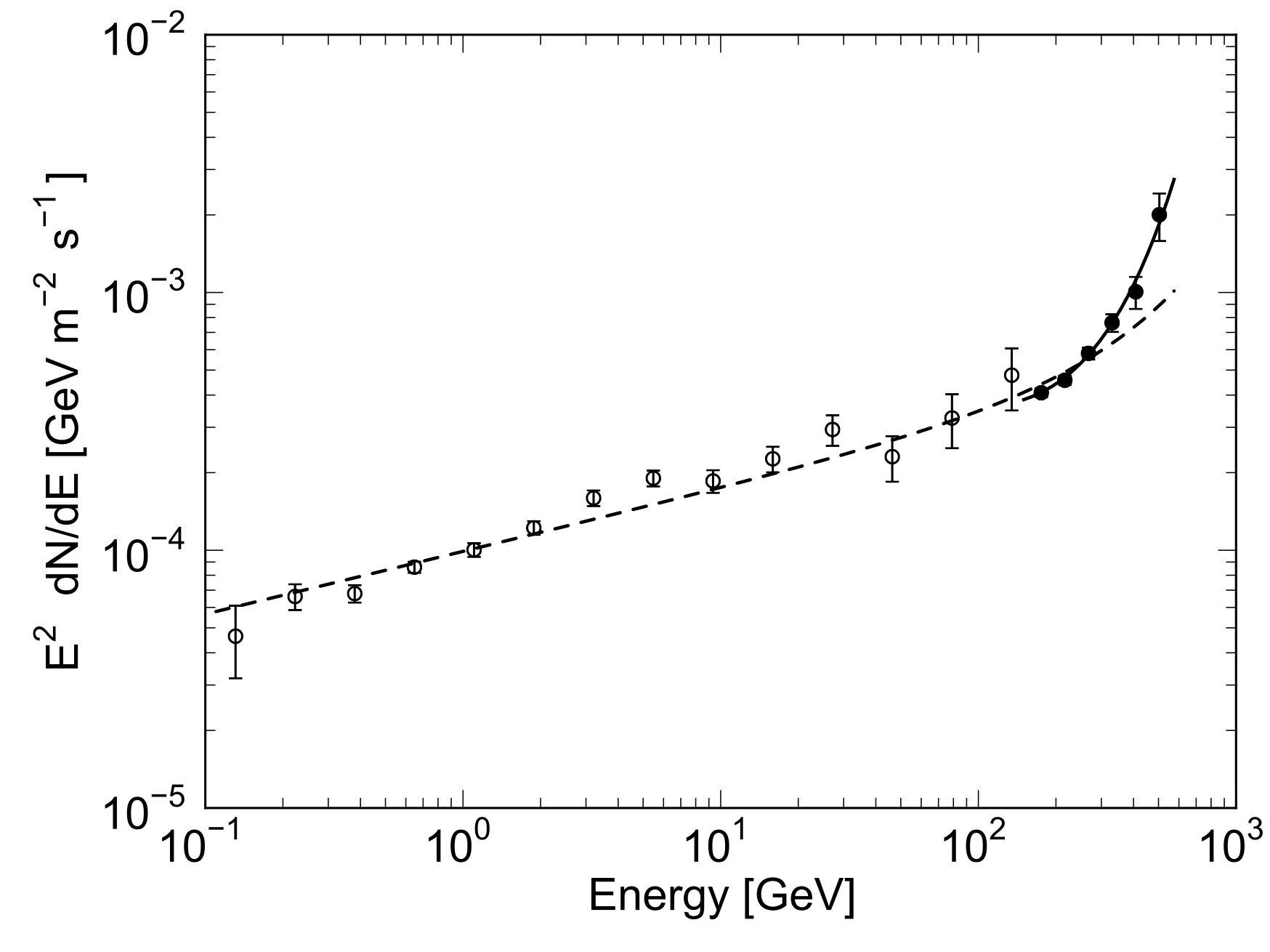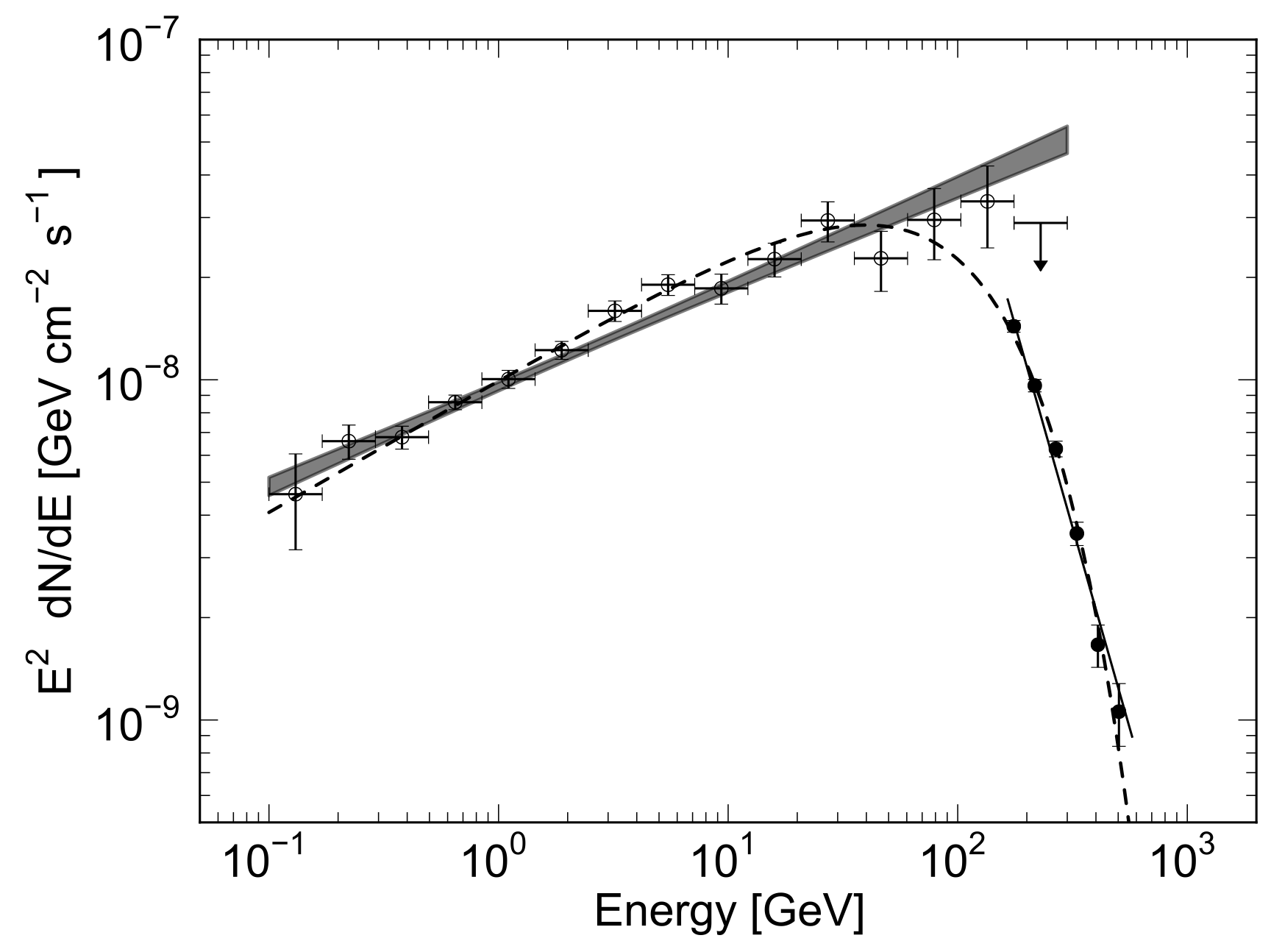
Reference: E. Aliu et al. (The VERITAS Collaboration), Astrophysical Journal 799: 7, 2015
Full text version
ArXiv: ArXiV:1411.1439
Contacts: Frank Krennrich
The gamma-ray spectra of distant blazars such as PG 1553+113 provide a unique probe of the cosmological radiative energy that was released during the formation of stars and galaxies and possibly other exotic processes. This everlasting light is collectively called the extragalactic background light (EBL). Galaxy surveys at ultraviolet, optical and infrared wavelengths provide estimates of a minimal level of EBL photons present in intergalactic space. Such a lower limit to the EBL can be used to estimate the opacity of the universe for gamma rays traversing this fog on cosmological distance scales.
In this paper we present the energy spectrum of PG 1553+113 over an energy range of 0.2 GeV - 0.8 TeV measured with unprecedented statistical precision using data from the Fermi-LAT and VERITAS. The spectrum reveals a sharp spectral cutoff at 102 GeV (± 2.5 GeV), allowing one to test the origin of this spectral feature.
Given the minimum EBL calculated from galaxy counts and distance estimates of PG 1553+113, it appears that the cutoff is largely caused by the gamma-ray opacity. However, distance estimates of PG 1553+113 lack an unambiguous redshift measurement based on spectral lines, and currently rely on indirect constraints. While lower limits to the redshift (z > 0.395) based on optical/UV observations of PG 1553+113 can be considered firm, to date upper limits are highly uncertain.
Upper limits to the redshift can be derived from tests using a range of gamma-ray opacities. The opacity is calculated based on the minimal EBL present as derived from galaxy counts and allowing the redshift to vary. The opacity is then used to correct the observed gamma ray spectrum yielding the intrinsic energy spectrum of PG 1553+113. Using a redshift that is larger than the actual redshift of PG 1553+113 results in an overestimate of the gamma-ray opacity, which will result in a source spectrum appearing too hard with an exponential rise towards higher energies. Exponential rises with energy are considered unphysical for the non-thermal spectra of blazars and can be ruled out. This line of argument provides a strong constraint on the actual redshift of PG 1553+113.
By using a well measured energy spectrum, combined with a minimal EBL based on galaxy counts, and the consideration of the effects of evolution of the EBL, we derive a firm upper limit to the redshift of PG 1553+113 of z < 0.62, thereby giving a well-constrained redshift range of 0.395 < z < 0.62.
FITS files: N/A
Figures from paper (click to get full size image):

